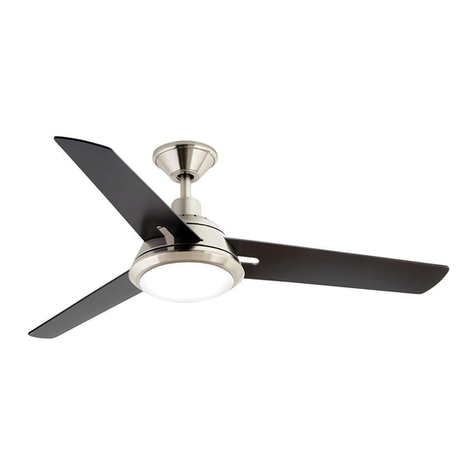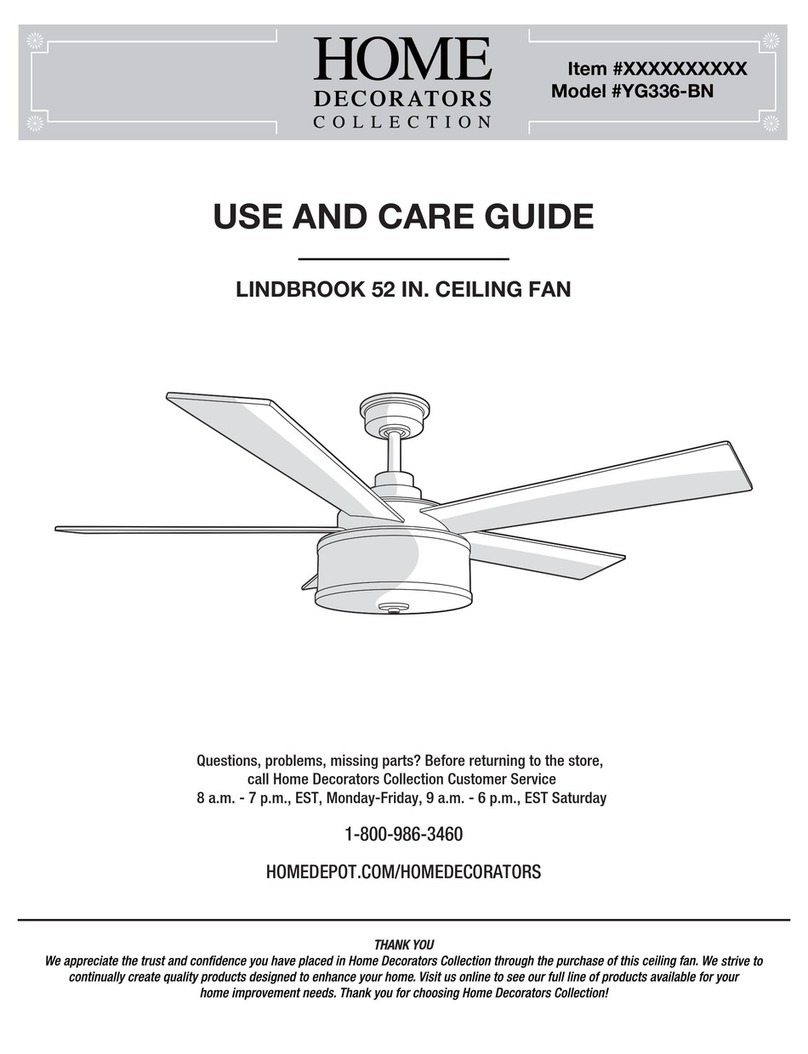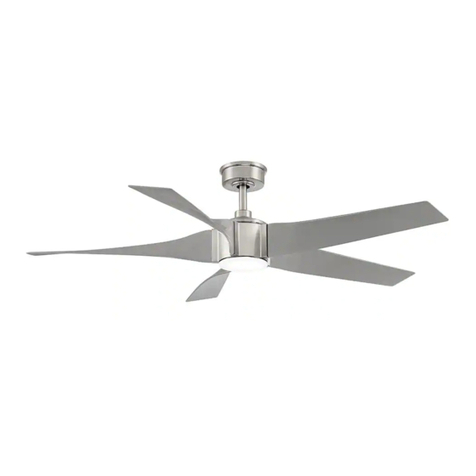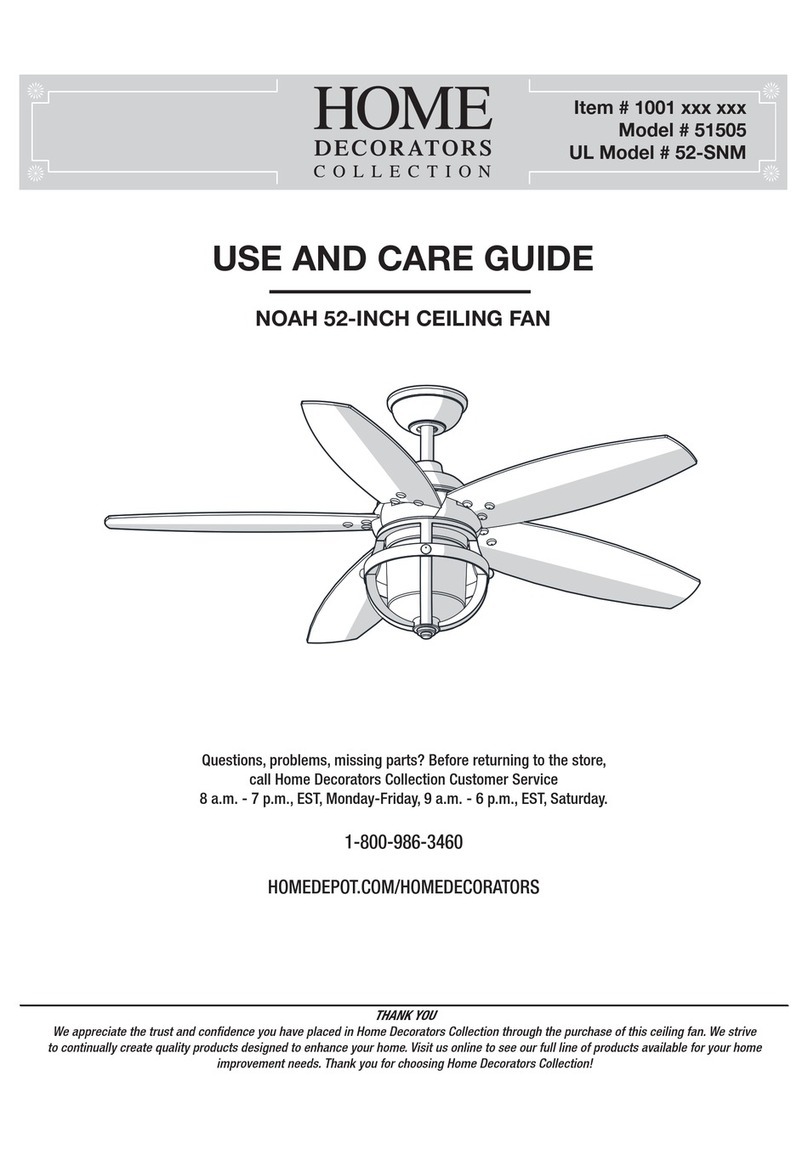
4.
Hanging the Fan
REMEMBER to turn off the power. Follow
the steps below to hang your fan properly.
NOTE: This ceiling fan is supplied with two
types of hanging assemblies; the standard
ceiling installation using the downrod with
b a l l a n d s o c k e t m o u n t i n g a n d t h e
"flushmount" installation. The "flushmount"
installation is recommended in rooms with
less than 8-foot ceilings or in areas where
additional space is desired from the floor to
the fan blades. When using the standard 4
1/2" downrod, the distance from the ceiling
to the bottom of the fan blades will be
approximately 12 1/2 inches. Once you have
selected which mounting system you will
use, proceed with the following instructions.
Wher e nece s sary, each se ctio n of the
i n s t r u c t i o n s w i l l n o t e t h e d i f f e r e n t
procedures to follow for the two types of
mounting.
3.
outlet box with the screws and washers
provided with your outlet box.
4. Pass the 120-volt supply wires through the
center hole in the ceiling hanger bracket as
shown in Fig. 6.
5. Remove the hanger pin, lock pin and set
screws from the top of the motor assembly.
6. Route wires exiting from the top of the fan
motor through the coupling cover and canopy
ring. Make sure the wide side of the canopy
ring are on top. Route the wires through the
canopy and then through the ball/downrod
assembly. (Fig. 6A)
7. Align the holes at the bottom of the downrod
with the holes in the collar on top of the motor
housing (Fig.6A). Carefully insert the hanger
pin through the holes In the collar and downrod
be careful not to Jam the pin against the wiring
inside the downrod. Insert the locking pin
through the hole in locked position. (Fig. 6A)
Secure the hanger bracket to the ceiling 8.
motor collar firmly and evenly. (Fig. 6A)
9. Place the downrod ball into the hanger
bracket socket. Rotate the downrod ball
until the groove of the downrod ball lines
up with the hook of the hanger bracket.
(This will help balance the fan.)
Tighten two set screws at top of the fan
Figure 5
Ceiling
hanger
bracket
Ceiling
canopy
Screws
Canopy ring
STANDARD CEILING
INSTALLATION
1.
(Fig. 5)
2. Remove th e hanger bracket from the
canopy by lo osening the four screws on
the top of the canopy. Remove the two
n on - s l o tt e d s cr e w s an d l o os e n t he
slotted screws. This will enable you to
remove t he hang er bracket. ( Fig. 5)
Remove the canopy ring from the canopy. WARNING
FAILURE TO PROPERLY INSTALL
LOCKING PIN AS NOTED IN STEP 7
COULD RESULT IN FAN LOOSENING
AND POSSIBLY FALLING.


































